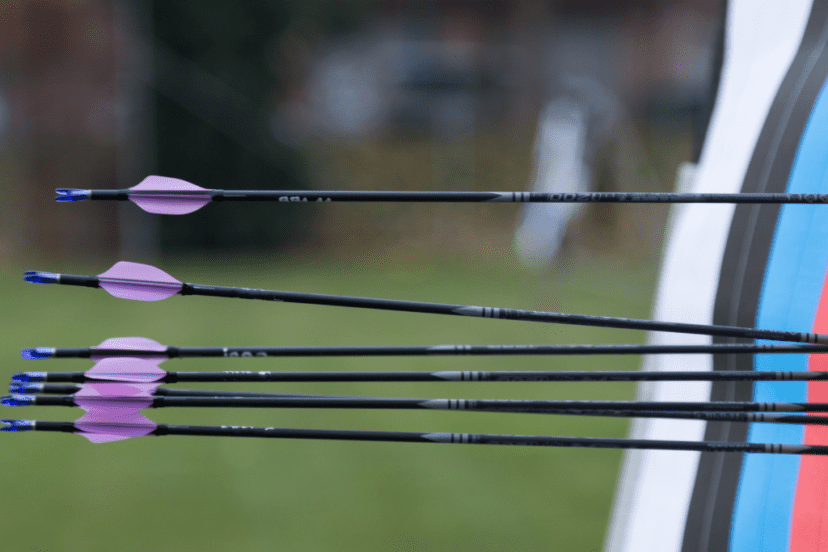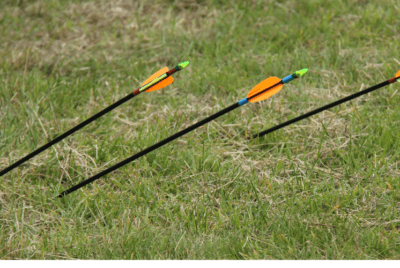Arrow Speed Calculator: How to Calculate Arrow Speed and Optimize Your Performance
I understand the importance of calculating arrow speed accurately. The speed at which an arrow travels can significantly impact its trajectory, accuracy, and penetration. In this article, I will guide you on how to calculate arrow speed effectively using an arrow speed calculator. Additionally, I’ll provide you with valuable suggestions to optimize your performance based on the calculated arrow speed.
Introduction
Archery is a fascinating sport that requires precision and skill. Whether you are an experienced archer or just starting your journey, understanding arrow speed and its implications can elevate your performance to new heights. Arrow speed refers to the velocity at which an arrow travels from the bow to the target. It is measured in feet per second (fps) or meters per second (mps).
Understanding Arrow Speed
What is arrow speed?
Arrow speed, as mentioned earlier, represents the velocity of an arrow in flight. It is determined by various factors, including the bow’s draw weight and length, arrow weight, bow efficiency, and arrow spine. Knowing the arrow speed helps archers make informed decisions about their equipment and shooting technique.
Why is arrow speed important?
Arrow speed plays a crucial role in archery for several reasons. Firstly, it affects the trajectory of the arrow. Faster arrows tend to have a flatter trajectory, meaning they travel in a straighter line and are less affected by external factors like wind. This is especially beneficial for long-range shots and aiming at small targets.
Secondly, arrow speed impacts the accuracy of your shots. Faster arrows have less time in the air, reducing the margin for error due to factors such as wind drift, target movement, or your own body movements. Higher arrow speeds also help compensate for slight miscalculations in range estimation.
Lastly, arrow speed affects the penetration power of the arrow. Faster arrows generate more kinetic energy upon impact, allowing them to penetrate deeper into the target. This is particularly important for bowhunters, as it ensures a clean and humane kill.
Factors Affecting Arrow Speed
To accurately calculate arrow speed, you need to consider the following factors:
Draw weight
The draw weight of a bow refers to the amount of force required to pull the bowstring back to its full draw length. A higher draw weight generally results in faster arrow speeds. However, it’s important to find a draw weight that you can comfortably handle without compromising your shooting form and accuracy.
Draw length
The draw length is the distance between the bowstring at full draw and the bow’s grip. It significantly impacts arrow speed. A longer draw length allows for a longer power stroke, resulting in increased arrow speed. It’s essential to determine your optimal draw length to maximize your performance.
Arrow weight
The weight of the arrow itself is another crucial factor affecting arrow speed. Heavier arrows tend to travel slower compared to lighter ones. However, there is a balance to be struck. While lighter arrows generally result in higher speeds, they may sacrifice penetration power and stability. It’s essential to find the right arrow weight that suits your shooting style and the intended purpose.
Bow efficiency
The efficiency of the bow, also known as its energy transfer, plays a significant role in arrow speed. A well-designed and properly tuned bow maximizes the transfer of energy from the limbs to the arrow, resulting in increased speed. Regular maintenance and tuning of your bow can help optimize its efficiency and improve arrow speed.
Arrow spine
The spine of an arrow refers to its stiffness. Choosing the appropriate spine for your bow setup is essential for optimal arrow speed. An arrow with the wrong spine may not flex correctly upon release, leading to decreased speed and accuracy. Consulting an expert or referring to arrow spine charts can assist you in selecting the right arrows for your bow.
Using an Arrow Speed Calculator
Now that we understand the factors affecting arrow speed, let’s explore the benefits of using an arrow speed archery calculator and how to utilize it effectively.
Benefits of using a calculator
An arrow speed archery calculator provides accurate and reliable measurements of arrow speed. It eliminates the need for manual calculations, which can be time-consuming and prone to errors. By entering the relevant data into the calculator, such as your bow specifications and arrow details, you can obtain precise arrow speed values.
How to use an arrow speed calculator
Using an arrow speed calculator is straightforward. Follow these steps:
1. Gather the necessary information: You will need details such as your bow’s draw weight and length, arrow weight, and arrow length.
2. Enter the required data: Input the relevant information into the calculator. Ensure accuracy while entering the values to obtain precise results.
3. Calculate arrow speed: Once you have entered all the necessary data, initiate the calculation process. The calculator will provide you with the arrow speed in fps.
4. Analyze the results: Interpret the calculated arrow speed and consider its implications for your shooting style and purposes.
Enter Your Details Below to Calculate Arrow Speed:
Recommended Arrow Speeds for Different Purposes
The ideal arrow speed varies depending on the specific purpose of your archery activities. Let’s explore recommended arrow speeds for different scenarios:
🎯 Target shooting
For target shooting or indoor competitions, arrow speed is not as crucial as accuracy. Moderate arrow speeds in the range of 250 to 300 fps (feet per second) are generally sufficient. Focus on consistency, form, and precision rather than maximizing speed.
🦌 Bowhunting
In bowhunting, arrow speed plays a more significant role. It helps ensure a swift and humane kill by increasing penetration power. Ideally, aim for arrow speeds between 275 and 325 fps. This range provides a good balance between speed, accuracy, and kinetic energy for effective hunting.
🐖 3D archery
3D archery involves shooting at three-dimensional animal targets placed at various distances and angles. Similar to bowhunting, recommended arrow speeds fall within the 275 to 325 fps range. This speed range helps compensate for variations in target distance and angles, providing consistent and accurate shots.
Tips to Increase Arrow Speed
If you’re looking to increase your arrow speed for improved performance, consider the following tips:
Optimize your draw weight
Increasing your bow’s draw weight can result in higher arrow speeds. However, it’s crucial to do so gradually and ensure you maintain proper form and shooting technique. Consult with an experienced archery professional to determine the appropriate draw weight increase for your skill level and physical capabilities.
Optimize your draw length
Adjusting your draw length to its optimal position can contribute to increased arrow speed. A longer draw length allows for a longer power stroke, resulting in more energy transferred to the arrow. Work with a knowledgeable archery instructor to determine your ideal draw length and make any necessary adjustments.
Choose lightweight arrows
Selecting lightweight arrows can significantly boost arrow speed. The mass of the arrow directly affects its acceleration and velocity. Look for arrows made from materials like carbon or aluminum that offer a balance between durability and lightness. However, ensure that the arrow weight is suitable for your bow’s draw weight and your shooting style.
Opt for a high-efficiency bow
Investing in a high-efficiency bow can provide substantial gains in arrow speed. Modern compound bows are designed to maximize energy transfer and minimize energy loss during the shot cycle. Research and test different bow models to find one that offers superior performance and increased arrow speed.
Impact of Arrow Speed on Accuracy and Penetration
Understanding how arrow speed influences accuracy and penetration is crucial for archers. Let’s explore these aspects in more detail:
Accuracy considerations
Faster arrow speeds contribute to improved accuracy, especially at longer distances. The flatter trajectory of fast arrows reduces the impact of external factors such as wind drift and target movement. Additionally, faster arrows minimize the time spent in the air, reducing the potential for errors due to shooter-induced movements. However, it’s important to balance speed with proper form and technique to maintain consistency and precision.
Penetration considerations
Arrow speed directly affects penetration power. Faster arrows carry more kinetic energy, allowing them to penetrate deeper into the target. This is particularly significant for bowhunters, as it ensures effective kills and ethical hunting. However, penetration also depends on other factors, such as arrow weight, broadhead design, and shot placement. Consider these factors in conjunction with arrow speed for optimal hunting performance.
Conclusion
Calculating arrow speed is essential for archery enthusiasts who aim to optimize their performance. By understanding the factors influencing arrow speed and utilizing an arrow speed calculator, you can make informed decisions about equipment choices, shooting technique, and achieving desired outcomes. Remember to consider your specific archery goals, such as target shooting or bowhunting, and adjust arrow speed accordingly. By implementing tips to increase arrow speed and recognizing its impact on accuracy and penetration, you can enhance your archery experience and achieve greater success on the field or range.
FAQs
1. What is the ideal arrow speed for beginners?
For beginners, a moderate arrow speed of around 250 to 300 fps is recommended. Focus on developing proper form and accuracy before chasing higher speeds.
2. Can arrow speed compensate for poor shooting form?
While higher arrow speeds can help to some extent, it is crucial to prioritize proper shooting form and technique. Good form remains the foundation for consistent and accurate shots.
3. How often should I tune my bow to maintain optimal arrow speed?
Regular bow maintenance and tuning are essential for maintaining optimal arrow speed. It is recommended to tune your bow at least once a year or whenever you make significant changes to your equipment.
4. Does arrow weight affect arrow speed significantly?
Yes, arrow weight has a direct impact on arrow speed. Lighter arrows generally travel faster, while heavier arrows sacrifice speed for increased penetration power.
5. Is arrow speed the only factor affecting accuracy?
No, arrow speed is just one of several factors influencing accuracy. Other factors include form, technique, bow tuning, arrow spine, and consistency in release. Achieving accuracy requires a holistic approach.






Comments are closed.